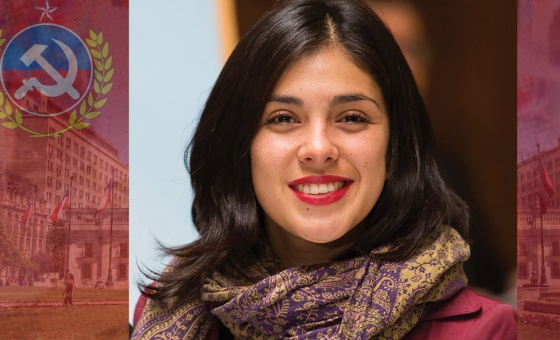This is the last article you can read this month
You can read more article this month
You can read more articles this month
Sorry your limit is up for this month
Reset on:
Please help support the Morning Star by subscribing here
THE COMMONALITY shared by the world’s principal religions — Islam, Judaism and Christianity — is the recognition of Abraham as the founding prophet of all three.
Its physical manifestation is the stupendous Temple Mount in Jerusalem, venerated as a holy place by Muslims, Jews and Christians alike.
This ancient convergence of separate faiths is set to acquire a momentous new symbolism in Berlin at the end of May when the foundation stone is laid for the House of One (HoO), an inter-religious place of learning, worship and reflection.
Its location is Petriplatz on the Fisher Island section of the River Spree, where the medieval city of Berlin-Colln was founded in 1237.
The immediate aim of the HoO project is to “make tangible that religions can be an asset — putting [forward] a model of a peaceful coexistence opposed to all atrocities committed in the name of religion,” according to those leading the project.
“We want to show that faith doesn't divide Jews, Christians and Muslims but instead reconciles them,” says theologian and project ambassador Markus Droge.
The international design competition for the HoO was won by Kuehn Malvezzi architects in 2012 and the build will be completed by 2025 at a cost of some £40 million.
Petriplatz has for a number of years been a site of an important archaeological excavation, which unearthed the foundations of three previous churches and a cemetery with over 4,000 graves.
The new building’s load will straddle these ancient foundations, perpetuating history as opposed to simply being yet another museum.
There is a dignified minimalism in the composition of the building, made up of a strong unity of three ascetic cubic volumes of different heights, marked sparsely with elongated window slits, which together project an intriguing civic formality which invites or indeed summons.
The synagogue, church and mosque contained within it are diverse structures, like houses grouped around a central square — in this case, a high-domed hall in the centre which extends into the urban space of Berlin and vice versa.
Ancient forms of construction will be employed, using sand-coloured brick, and the walls, its central component, will be almost one metre thick.
The strong vertical sequencing of elements is spiritually elevating and conveys solemnity, while the dome of the central hall alludes, perhaps, to the ancient domes of classic synagogues (Hurva), mosques (Hagia Sophia, originally an Orthodox church) or Christian churches (Florence Cathedral).
Gently inclined galleries around the central hall form a continuous circular ascent towards the rooftop, where a spacious and elegant loggia, 32 metres high, surrounds the dome and offers tantalising vistas of the city.
In the bowels of the building, the raw surface of the archaeological dig will remain open and visible to visitors — a reminder of history, the passage of time and renewal.
“People and nations and creeds will remain separate,” wrote Leo Baeck, German rabbi, scholar and theologian. “But they will know that they belong together, that they should live together on this Earth, recognising and understanding one another and, when there is need, helping one another.”
The House of One will be a not inconsiderable step in that direction.












